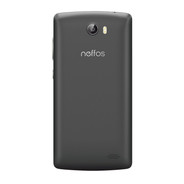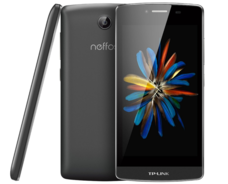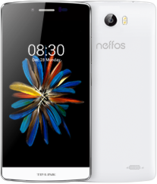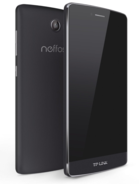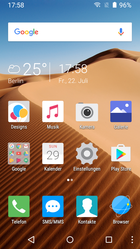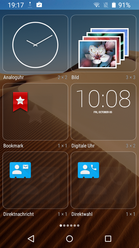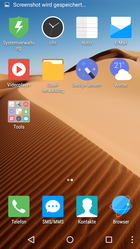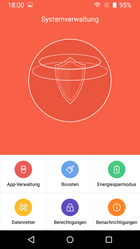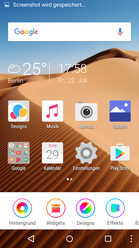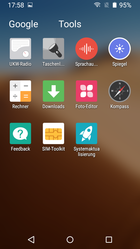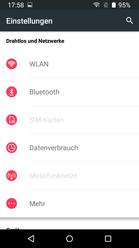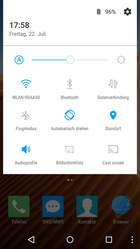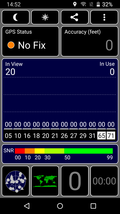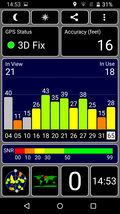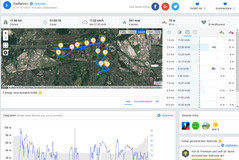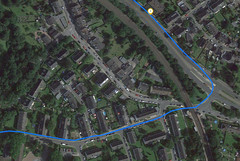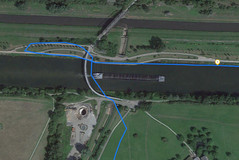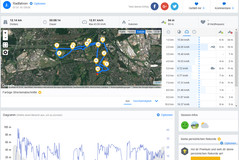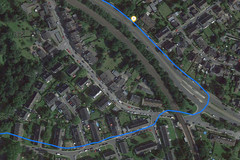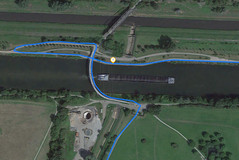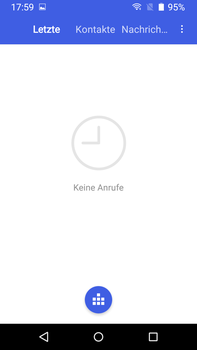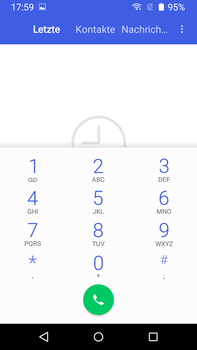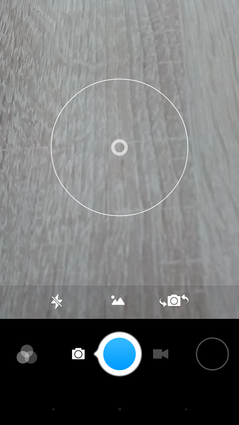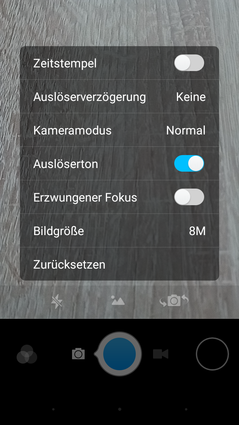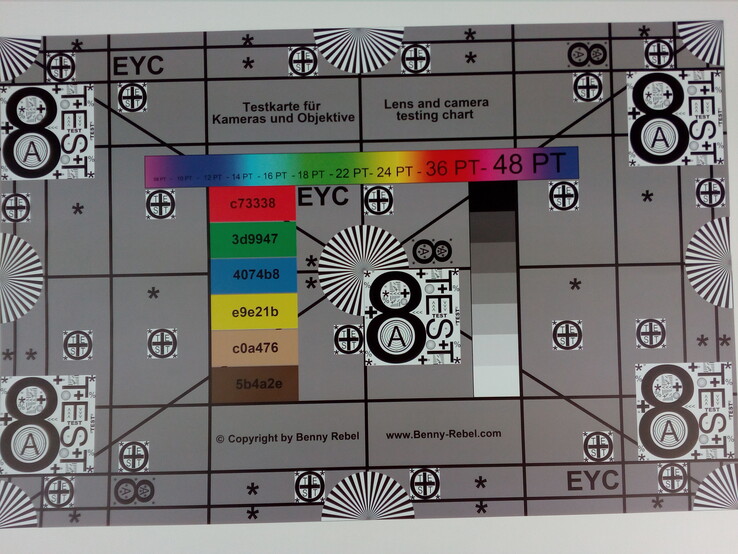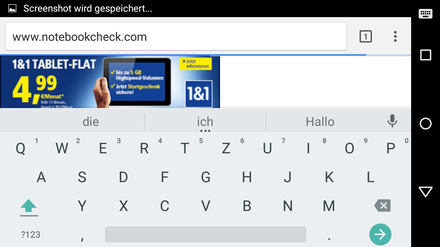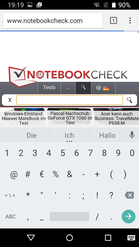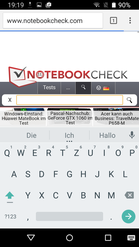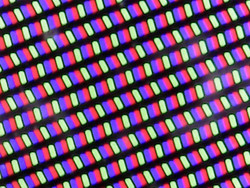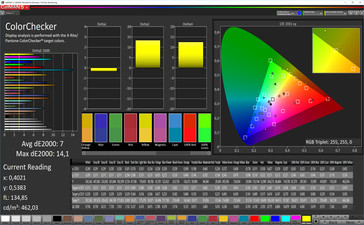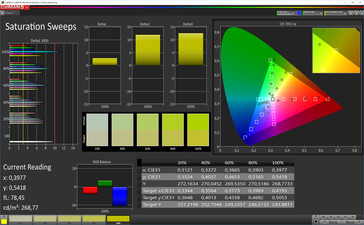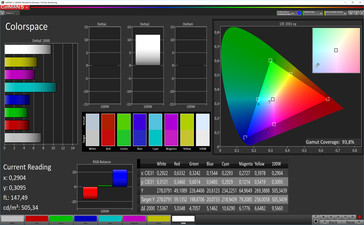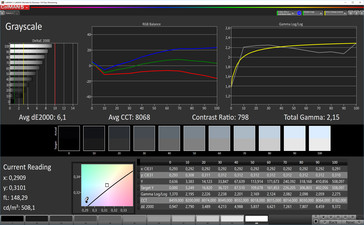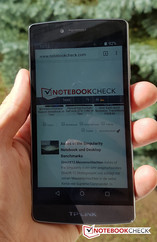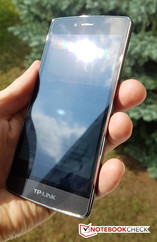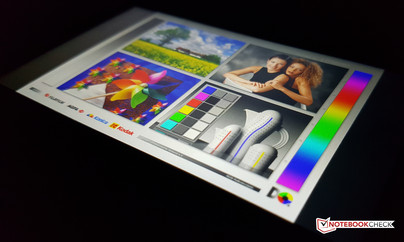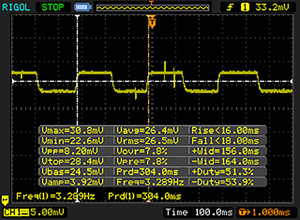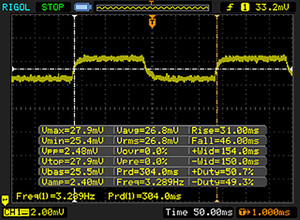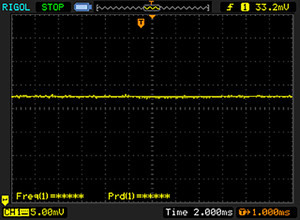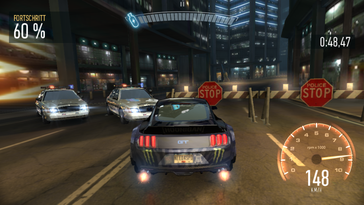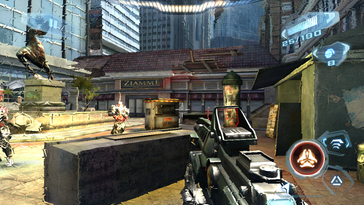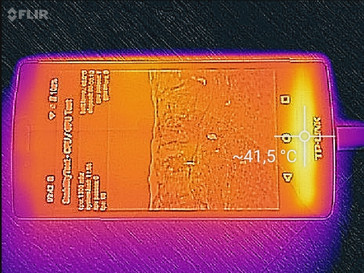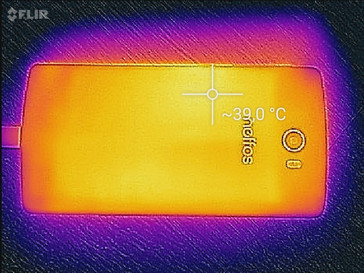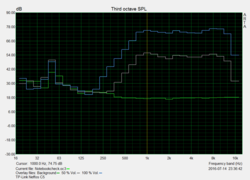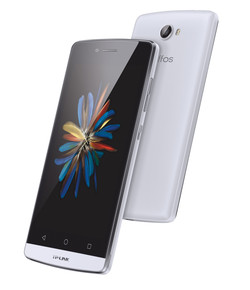TP-Link Neffos C5 Smartphone Review
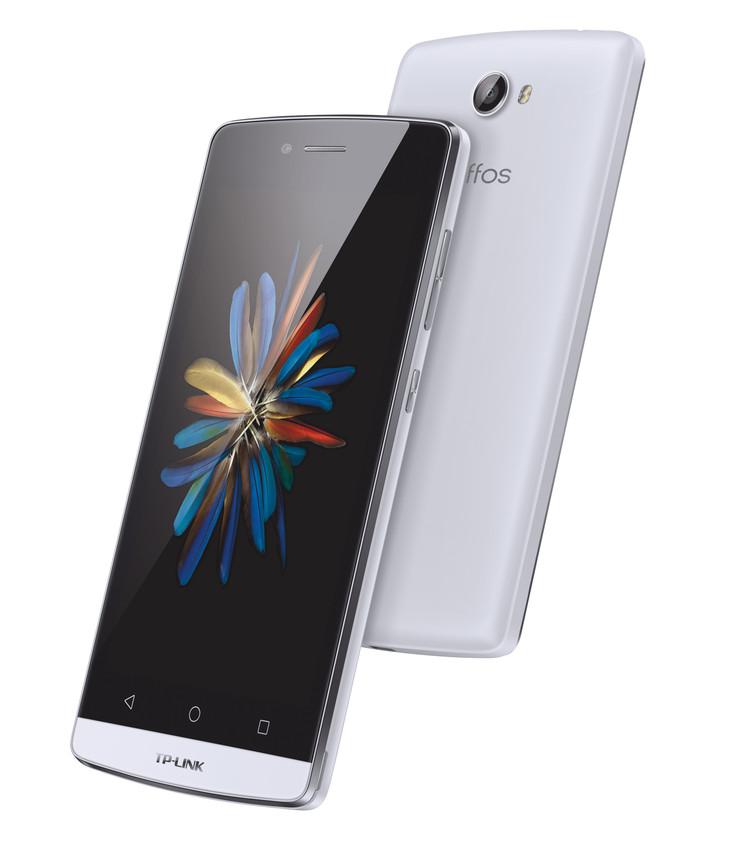
For the original German review, see here.
TP-Link, which is known for its Internet routers, expands its portfolio with another product: smartphones. Shortly before this year's MWC 2016 (Mobile World Congress), the manufacturer announced three models from the Neffos series, among them the Neffos C5.
The 5-inch entry-level device is equipped with an IPS-HD panel as well as 2 GB RAM and 16 GB storage. Inside the Neffos C5 is a MediaTek MT6735 clocked at 1.3 GHz. One highlight of the device: It supports dual-standby with an additional slot for a microSD-card. The replaceable battery with a capacity of 2200 mAh is not a matter of course anymore, either.
The entry-level device is available in the colors pearl white and anthracite. Priced at around 140 Euros (~$156), the LTE smartphone has numerous rivals like the UHANS S1, Coolpad Porto S, LG K10, ZTE Blade V7 Lite as well as the UMi Touch.
Case
The glass at the front of the Neffos C5 is seamlessly integrated into the chassis, but the screen to body is just 66.5 percent. The polycarbonate back does not leave a very sophisticated impression and can be pushed in quite easily – it can be removed if necessary and grants access to the microSD-card reader, the Micro-SIM slot as well as the replaceable battery.
The quality of the slightly textured physical buttons for the volume control and the power button meets the price point – both the position as well as the pressure points are mostly convincing. The stability and the torsion resistance are good – you can only hear some creaking when you apply pressure.
Connectivity
The connectivity of the entry-level device is rather minimalistic – you will have to waive an NFC chip, fast charging, fingerprint scanner or a status LED. In return, the Neffos C5 is equipped with dual-SIM support as well as the possibility to use the device as an FM radio. You can charge the smartphone via Micro-USB 2.0 port at the bottom – but there is no USB-OTG support.
The internal storage is 16 GB, but the user can only use 9.9 GB for its own files. To avoid problems with the capacity, it is possible to transfer apps from the internal storage to an external memory card. Our 64 GB reference card from Toshiba (Exceria Pro M401) was recognized by the review unit, even though the supported maximum size is limited to just 32 GB according to TP-Link.
Software
The operating system is Android 5.1 (Lollipop) – there was no software update available on our test model and no announcement whether there will be an update to Android 6.0 at all. The user interface from the manufacturer is modern and minimalist. The design is slightly modified, but you can still recognize the Vanilla UI in many spots.
Compared to stock Android, there are not many software adjustments or additional settings. The app design can be adjusted with the preinstalled theme store. Applications are shown on the home screen and there is no app drawer, bit you can create folders.
Communication & GPS
The Neffos C5 supports all common GSM and 3G bands in Germany. The same applies for LTE Cat.4 with transfer rates of up to 150 Mbps (downstream). The entry-level device allows the use of up to two Micro-SIM cards simultaneously – both slots support all wireless frequencies.
The integrated WLAN module of the Neffos C5 only supports the IEEE 802.11 standards b/g/n in 2.4 GHz networks. Both the dampening in direct proximity to the router (Telekom Speedport, W921V) at almost -45 dBm and the transfer rate between the smartphone and our reference router Linksys EA 8500 are on par with other entry-level devices.
Bluetooth 4.0 is available for wireless transfers between devices.
| Networking | |
| iperf Server (receive) TCP 1 m | |
| Xiaomi Mi 5 | |
| TP-Link Neffos C5 | |
| UHANS S1 | |
| iperf Client (transmit) TCP 1 m | |
| Xiaomi Mi 5 | |
| UHANS S1 | |
| TP-Link Neffos C5 | |
The GPS module of the Neffos C5 finds the current position outdoors reliably and quickly and with an accuracy down to around 5 meters (~16 ft). Inside, however, the device cannot locate its position. We also use the smartphone on a bicycle ride and compare the results with the bicycle navigation system Garmin Edge 500. The TP Link smartphone shows a deviation of 480 meters (~0.3 miles) – the accuracy of the GPS module is average in general. That entry-level devices can manage a better performance on our test track is shown by the Coolpad Porto S (150 meters (~0.1 mile) difference), for example.
Telephone & Voice Quality
Cameras
The CMOS sensor of the rear-facing camera has a resolution of 8 megapixels (3264x2448 pixels). The quality of the pictures is average at best for a device in this price segment. Pictures appear blurry and the contrast is low (scene 1: forest), and the colors look pale as well as washed out. The 8 MP camera is not very convincing in scenes with brightness differences (scene 3: environment) either – the bad dynamic range in the pictures darkens large parts of the picture too much. We can see noise in low-light scenes and contours are blurry (scene 2: night).
The front camera has 2560x1920 pixels (5 MP). The quality is sufficient for some snapshots, and you get a Beauty Mode for selfies. Videos on the Neffos C5 can be recorded in 1080p at 30 fps.
Accessories & Warranty
Inside the box is a modular power adapter with a nominal output of 5 watts (5 V, 1 A) as well as a USB cable. An accompanying headset was also provided with our test model.
TP-Link grants a 24-month warranty for its smartphone.
Input Devices & Handling
Display
The 5-inch IPS LC-display has a resolution of 1280x720 pixels, which is sufficiently high, so contents are sharp enough with a pixel density of 294 PPI. The maximum luminance of the IPS panel is very good for a device in this price range at 513 cd/m². Our practical APL50 test shows 505 cd/m² in the center, so it hardly differs from the maximum luminance. The measurements of the maximum luminance with the activated brightness sensor revealed a similar value (508 cd/m²).
| |||||||||||||||||||||||||
Brightness Distribution: 89 %
Center on Battery: 508 cd/m²
Contrast: 876:1 (Black: 0.58 cd/m²)
ΔE ColorChecker Calman: 7 | ∀{0.5-29.43 Ø4.79}
ΔE Greyscale Calman: 6.1 | ∀{0.09-98 Ø5}
Gamma: 2.15
CCT: 8068 K
| TP-Link Neffos C5 IPS, 1280x720, 5" | Coolpad Porto S IPS, 1280x720, 5" | ZTE Blade V7 Lite IPS, 1280x720, 5" | UHANS S1 IPS, 1280x720, 5" | LG K10 IPS, 1280x720, 5.3" | UMI Touch IPS, 1920x1080, 5.5" | Xiaomi Mi 5 IPS, 1920x1080, 5.2" | |
|---|---|---|---|---|---|---|---|
| Screen | -15% | 5% | -30% | -0% | -3% | 29% | |
| Brightness middle (cd/m²) | 508 | 407 -20% | 312 -39% | 525 3% | 370 -27% | 424 -17% | 598 18% |
| Brightness (cd/m²) | 491 | 403 -18% | 302 -38% | 471 -4% | 355 -28% | 415 -15% | 566 15% |
| Brightness Distribution (%) | 89 | 92 3% | 79 -11% | 82 -8% | 92 3% | 91 2% | 90 1% |
| Black Level * (cd/m²) | 0.58 | 0.5 14% | 0.15 74% | 0.92 -59% | 0.28 52% | 0.54 7% | 0.51 12% |
| Contrast (:1) | 876 | 814 -7% | 2080 137% | 571 -35% | 1321 51% | 785 -10% | 1173 34% |
| Colorchecker dE 2000 * | 7 | 7.9 -13% | 8.2 -17% | 8.6 -23% | 6.7 4% | 6.9 1% | 3.5 50% |
| Colorchecker dE 2000 max. * | 14.1 | 18.2 -29% | 16.5 -17% | 19.4 -38% | 17.8 -26% | 10.9 23% | 6.1 57% |
| Greyscale dE 2000 * | 6.1 | 8.9 -46% | 9.2 -51% | 10.6 -74% | 7.9 -30% | 6.8 -11% | 3.5 43% |
| Gamma | 2.15 102% | 2.46 89% | 2.29 96% | 2.34 94% | 2.21 100% | 1.99 111% | 2.29 96% |
| CCT | 8068 81% | 8332 78% | 9017 72% | 9487 69% | 9072 72% | 8131 80% | 6532 100% |
* ... smaller is better
Both the contrast (1:876) and the black value (0.58 cd/m²) of the Neffos C5 are similar to our entry-level rivals, and the more realistic APL50 test does not show any big deviations either (0.59 cd/m², 1:869). The DeltaE deviations of 7.0 (ColorChecker) and 6.1 (Grayscale) are satisfying and not overly high for an inexpensive smartphone.
Thanks to the high brightness and the good contrast ratio, you can use the Neffos C5 very comfortably outdoors. The viewing angles are stable as well. You can even see the screen content from very flat angles without contrast drops – only the luminance will be reduced a bit.
Display Response Times
| ↔ Response Time Black to White | ||
|---|---|---|
| 34 ms ... rise ↗ and fall ↘ combined | ↗ 16 ms rise | |
| ↘ 18 ms fall | ||
| The screen shows slow response rates in our tests and will be unsatisfactory for gamers. In comparison, all tested devices range from 0.1 (minimum) to 240 (maximum) ms. » 90 % of all devices are better. This means that the measured response time is worse than the average of all tested devices (20.3 ms). | ||
| ↔ Response Time 50% Grey to 80% Grey | ||
| 77 ms ... rise ↗ and fall ↘ combined | ↗ 31 ms rise | |
| ↘ 46 ms fall | ||
| The screen shows slow response rates in our tests and will be unsatisfactory for gamers. In comparison, all tested devices range from 0.165 (minimum) to 636 (maximum) ms. » 99 % of all devices are better. This means that the measured response time is worse than the average of all tested devices (31.7 ms). | ||
Screen Flickering / PWM (Pulse-Width Modulation)
| Screen flickering / PWM not detected | |||
In comparison: 53 % of all tested devices do not use PWM to dim the display. If PWM was detected, an average of 8152 (minimum: 5 - maximum: 343500) Hz was measured. | |||
Performance
Heart of the TP-Link Neffos C5 is a MediaTek SoC (System on a Chip) from 2014. The processor MT6735 is manufactured in a 28 nm process and consists of four CPU cores based on the Cortex-A53 architecture with 64-bit support.
The entry-level smartphone is actually quite powerful in practice for this price range and navigation on the user interface or in apps was mainly smooth. Multitasking caused more stutters and delays. Subjectively, the browser performance is sufficient for a device in this price range, even though web contents take some time before they are loaded and scrolling is not smooth. Overall, the subjective system performance is good, but it cannot stand out from other entry-level smartphones.
The synthetic benchmark results of the Neffos C5 are slightly higher compared to rivals with the same MediaTek SoC. The TP-Link smartphone is – somewhat unexpected – even on par with the UMi Touch and UHANS S1, which are equipped with the slightly more powerful processor MT6753 in the browser tests. The general performance on the other hand does not stand a chance against modern high-end devices like the Xiaomi Mi 5.
The performance of the flash storage is even below average for this price range, and the test model can only compete with the LG K10 in AndroBench 3. The integrated microSD-card slot on the other hand is on a good level for this class. We checked the performance with our reference card Toshiba Exceria Pro M401 (read up to 95 MB/s, write 80 MB/s) and 39.1 MB/s read and 18.9 MB/s write for the Neffos C5, respectively, are average in our comparison group.
| AndroBench 3-5 | |
| Sequential Write 256KB SDCard (sort by value) | |
| TP-Link Neffos C5 | |
| ZTE Blade V7 Lite | |
| UHANS S1 | |
| LG K10 | |
| UMI Touch | |
| Sequential Read 256KB SDCard (sort by value) | |
| TP-Link Neffos C5 | |
| ZTE Blade V7 Lite | |
| UHANS S1 | |
| LG K10 | |
| UMI Touch | |
| Random Write 4KB (sort by value) | |
| TP-Link Neffos C5 | |
| Coolpad Porto S | |
| ZTE Blade V7 Lite | |
| UHANS S1 | |
| LG K10 | |
| UMI Touch | |
| Xiaomi Mi 5 | |
| Random Read 4KB (sort by value) | |
| TP-Link Neffos C5 | |
| Coolpad Porto S | |
| ZTE Blade V7 Lite | |
| UHANS S1 | |
| LG K10 | |
| UMI Touch | |
| Xiaomi Mi 5 | |
| Sequential Write 256KB (sort by value) | |
| TP-Link Neffos C5 | |
| Coolpad Porto S | |
| ZTE Blade V7 Lite | |
| UHANS S1 | |
| LG K10 | |
| UMI Touch | |
| Xiaomi Mi 5 | |
| Sequential Read 256KB (sort by value) | |
| TP-Link Neffos C5 | |
| Coolpad Porto S | |
| ZTE Blade V7 Lite | |
| UHANS S1 | |
| LG K10 | |
| UMI Touch | |
| Xiaomi Mi 5 | |
| AnTuTu v6 - Total Score (sort by value) | |
| TP-Link Neffos C5 | |
| Coolpad Porto S | |
| ZTE Blade V7 Lite | |
| UHANS S1 | |
| LG K10 | |
| UMI Touch | |
| Xiaomi Mi 5 | |
| Geekbench 3 | |
| 64 Bit Single-Core Score (sort by value) | |
| TP-Link Neffos C5 | |
| ZTE Blade V7 Lite | |
| UHANS S1 | |
| LG K10 | |
| UMI Touch | |
| Xiaomi Mi 5 | |
| 64 Bit Multi-Core Score (sort by value) | |
| TP-Link Neffos C5 | |
| ZTE Blade V7 Lite | |
| UHANS S1 | |
| LG K10 | |
| UMI Touch | |
| Xiaomi Mi 5 | |
| 3DMark | |
| 1280x720 offscreen Ice Storm Unlimited Score (sort by value) | |
| TP-Link Neffos C5 | |
| Coolpad Porto S | |
| ZTE Blade V7 Lite | |
| UHANS S1 | |
| LG K10 | |
| UMI Touch | |
| Xiaomi Mi 5 | |
| 1280x720 offscreen Ice Storm Unlimited Graphics Score (sort by value) | |
| TP-Link Neffos C5 | |
| Coolpad Porto S | |
| ZTE Blade V7 Lite | |
| UHANS S1 | |
| LG K10 | |
| UMI Touch | |
| Xiaomi Mi 5 | |
| 1280x720 offscreen Ice Storm Unlimited Physics (sort by value) | |
| TP-Link Neffos C5 | |
| Coolpad Porto S | |
| ZTE Blade V7 Lite | |
| UHANS S1 | |
| LG K10 | |
| UMI Touch | |
| Xiaomi Mi 5 | |
| 2560x1440 Sling Shot OpenGL ES 3.0 (sort by value) | |
| TP-Link Neffos C5 | |
| ZTE Blade V7 Lite | |
| UHANS S1 | |
| LG K10 | |
| UMI Touch | |
| Xiaomi Mi 5 | |
| 2560x1440 Sling Shot OpenGL ES 3.0 Graphics (sort by value) | |
| TP-Link Neffos C5 | |
| ZTE Blade V7 Lite | |
| UHANS S1 | |
| LG K10 | |
| UMI Touch | |
| Xiaomi Mi 5 | |
| 2560x1440 Sling Shot OpenGL ES 3.0 Physics (sort by value) | |
| TP-Link Neffos C5 | |
| ZTE Blade V7 Lite | |
| UHANS S1 | |
| LG K10 | |
| UMI Touch | |
| Xiaomi Mi 5 | |
| GFXBench (DX / GLBenchmark) 2.7 | |
| T-Rex Onscreen (sort by value) | |
| TP-Link Neffos C5 | |
| Coolpad Porto S | |
| ZTE Blade V7 Lite | |
| LG K10 | |
| UMI Touch | |
| Xiaomi Mi 5 | |
| 1920x1080 T-Rex Offscreen (sort by value) | |
| TP-Link Neffos C5 | |
| Coolpad Porto S | |
| ZTE Blade V7 Lite | |
| LG K10 | |
| UMI Touch | |
| Xiaomi Mi 5 | |
| GFXBench 3.0 | |
| on screen Manhattan Onscreen OGL (sort by value) | |
| TP-Link Neffos C5 | |
| Coolpad Porto S | |
| ZTE Blade V7 Lite | |
| LG K10 | |
| UMI Touch | |
| Xiaomi Mi 5 | |
| 1920x1080 1080p Manhattan Offscreen (sort by value) | |
| TP-Link Neffos C5 | |
| Coolpad Porto S | |
| ZTE Blade V7 Lite | |
| LG K10 | |
| UMI Touch | |
| Xiaomi Mi 5 | |
| PCMark for Android - Work performance score (sort by value) | |
| TP-Link Neffos C5 | |
| Coolpad Porto S | |
| UHANS S1 | |
| LG K10 | |
| UMI Touch | |
| Xiaomi Mi 5 | |
| Mozilla Kraken 1.1 - Total (sort by value) | |
| TP-Link Neffos C5 | |
| Coolpad Porto S | |
| ZTE Blade V7 Lite | |
| UHANS S1 | |
| LG K10 | |
| UMI Touch | |
| Xiaomi Mi 5 | |
| JetStream 1.1 - Total Score (sort by value) | |
| TP-Link Neffos C5 | |
| Coolpad Porto S | |
| ZTE Blade V7 Lite | |
| UHANS S1 | |
| LG K10 | |
| UMI Touch | |
| Xiaomi Mi 5 | |
| Octane V2 - Total Score (sort by value) | |
| TP-Link Neffos C5 | |
| Coolpad Porto S | |
| ZTE Blade V7 Lite | |
| UHANS S1 | |
| LG K10 | |
| UMI Touch | |
| Xiaomi Mi 5 | |
* ... smaller is better
Games
The integrated graphics unit Mali-T720 MP2 consists of two clusters that can reach up to 650 MHz. Modern titles from the Android Play Store like Need for Speed No Limits are handled by the GPU without much problem – but we noticed distinct stutters in the graphics-demanding ego-shooter N.O.V.A. 3. The touchscreen was accurate during gaming.
Emissions
Temperature
(±) The maximum temperature on the upper side is 41.5 °C / 107 F, compared to the average of 35.2 °C / 95 F, ranging from 21.9 to 247 °C for the class Smartphone.
(+) The bottom heats up to a maximum of 39.4 °C / 103 F, compared to the average of 34 °C / 93 F
(±) In idle usage, the average temperature for the upper side is 32.9 °C / 91 F, compared to the device average of 32.9 °C / 91 F.
Speakers
The mono speaker at the rear of the device is sufficiently powerful at up to 85 dB(A). The sound quality is sufficient for video playback and short music titles – but that is all. As expected, there is no bass, and the sound tends to be a bit tinny.
The sound quality at the 3.5 mm jack is okay.
Frequence diagrams in comparisons (boxes above can be checked/unchecked!)
Value 1: Pink Noise 100% Vol.; Value 2: audio off
Energy Management
Power Consumption
All in all, the consumption of the Neffos C5 is okay. The idle consumption is similar to the other comparison devices, but the TP-Link smartphone needs much more power than its rivals under load, 6 watts on average.
| Off / Standby | |
| Idle | |
| Load |
|
Key:
min: | |
| TP-Link Neffos C5 2200 mAh | Coolpad Porto S 2000 mAh | ZTE Blade V7 Lite 2500 mAh | UHANS S1 2200 mAh | LG K10 2300 mAh | UMI Touch 4000 mAh | |
|---|---|---|---|---|---|---|
| Power Consumption | -2% | 31% | 25% | 2% | ||
| Idle Minimum * (Watt) | 0.72 | 1.16 -61% | 0.63 12% | 0.7 3% | 0.89 -24% | |
| Idle Average * (Watt) | 1.87 | 2.21 -18% | 1.37 27% | 1.13 40% | 2 -7% | |
| Idle Maximum * (Watt) | 2 | 2.24 -12% | 1.71 14% | 1.25 37% | 2.1 -5% | |
| Load Average * (Watt) | 5.99 | 3.34 44% | 2.82 53% | 4.39 27% | 3.87 35% | |
| Load Maximum * (Watt) | 6.45 | 3.95 39% | 3.36 48% | 5.43 16% | 5.79 10% |
* ... smaller is better
Battery Runtime
The capacity of the replaceable lithium ion battery is 2200 mAh. This is not very generous considering the large chassis of the Neffos C5. The battery runtime in our WiFi test at an adjusted luminance is comparable to other entry-level smartphones at 7 hours and 33 minutes.
It takes about 2 hours and 30 minutes before the empty battery is fully charged again.
| TP-Link Neffos C5 2200 mAh | Coolpad Porto S 2000 mAh | ZTE Blade V7 Lite 2500 mAh | UHANS S1 2200 mAh | LG K10 2300 mAh | UMI Touch 4000 mAh | |
|---|---|---|---|---|---|---|
| Battery runtime | ||||||
| WiFi v1.3 (h) | 7.6 | 8.4 11% | 8.6 13% | 5.2 -32% | 7.6 0% | 9.2 21% |
Pros
Cons
Verdict
The TP-Link Neffos C5 is an inexpensive smartphone with strengths in terms of usability – thanks to the replaceable battery and the dual-SIM feature without losing the ability to expand the storage via microSD-card at the same time. Another advantage for a smartphone in this price range is the good outdoor visibility even under sunlight.
"The entry of the Chinese manufacturer TP-Link into the smartphone market is not a bad start, but the Neffos C5 cannot fully convince us. Depending on your usage profile, it can still be an alternative to other entry-level smartphones, which offer a better overall package though."
In return, the Neffos C5 can convince neither with the camera quality nor the chassis quality or an above-average system performance for this price range – the UHANS S1, for example, offers more for the money. Android 6.0 would have been desirable as well.
TP-Link Neffos C5
- 08/01/2016 v5.1 (old)
Marcus Herbrich




